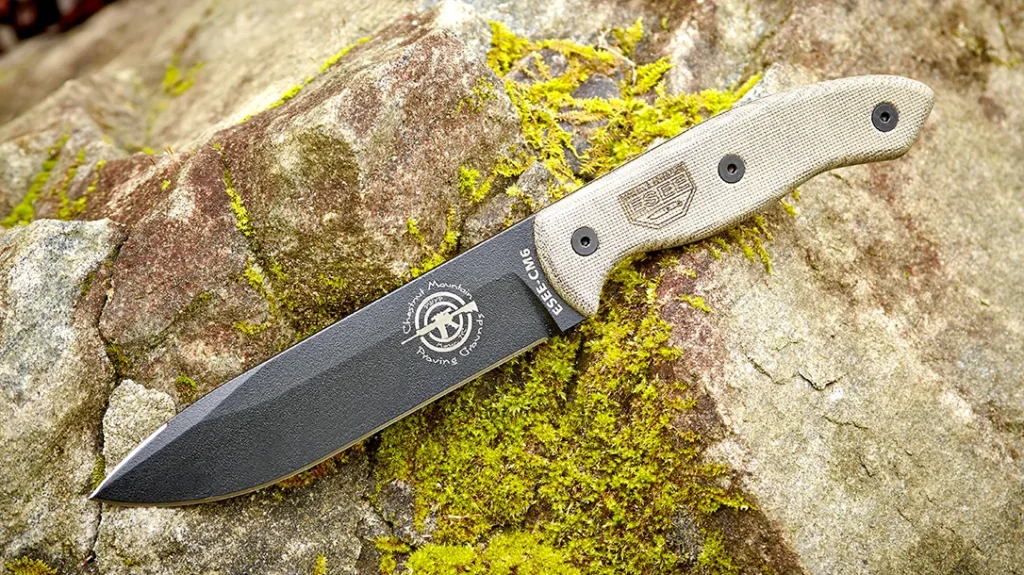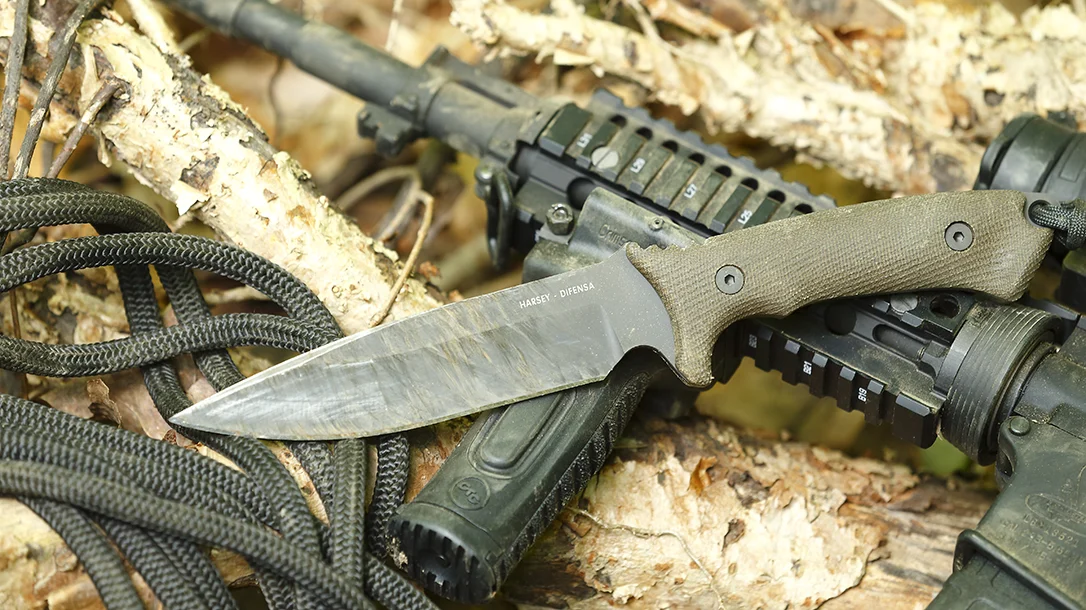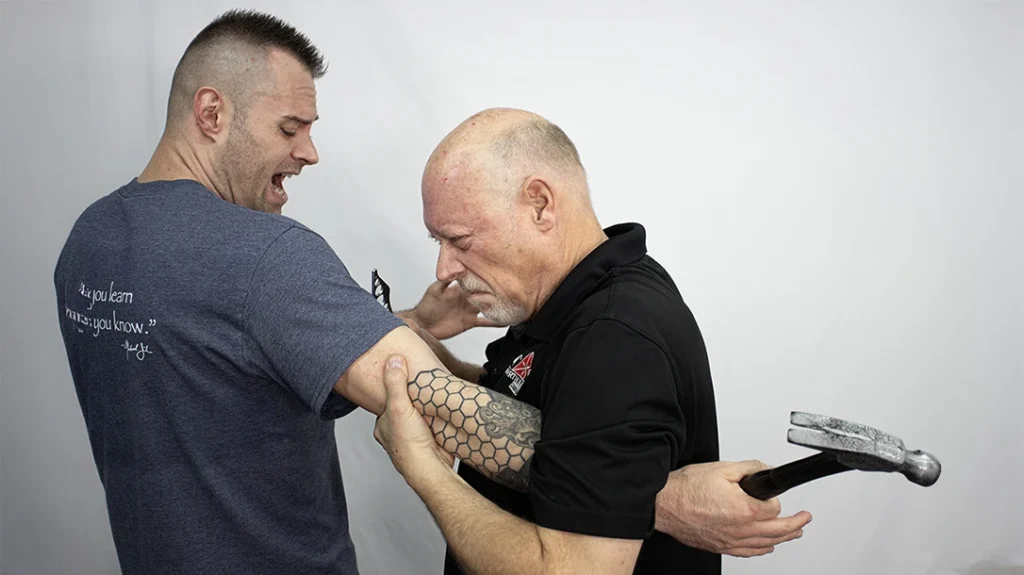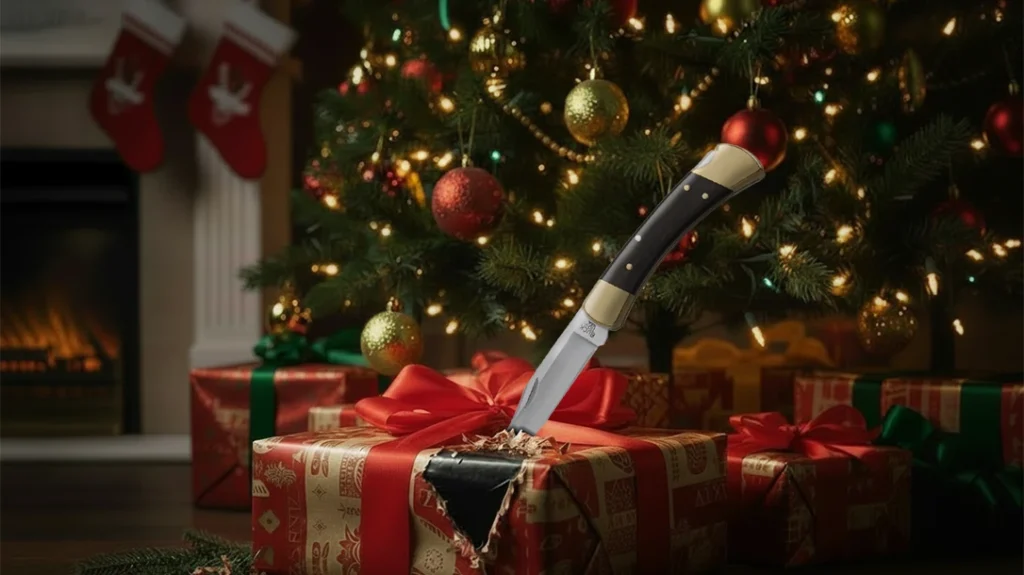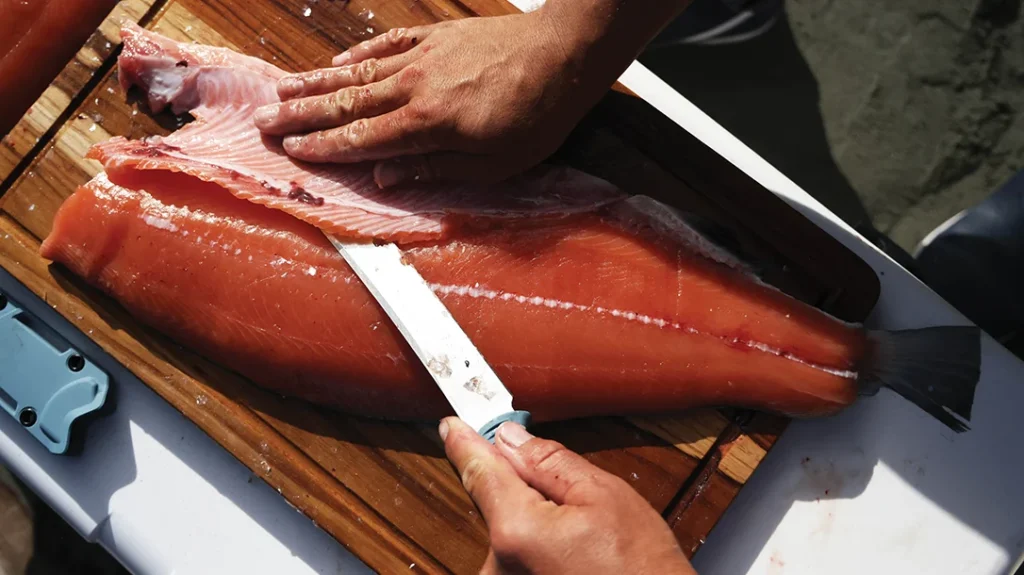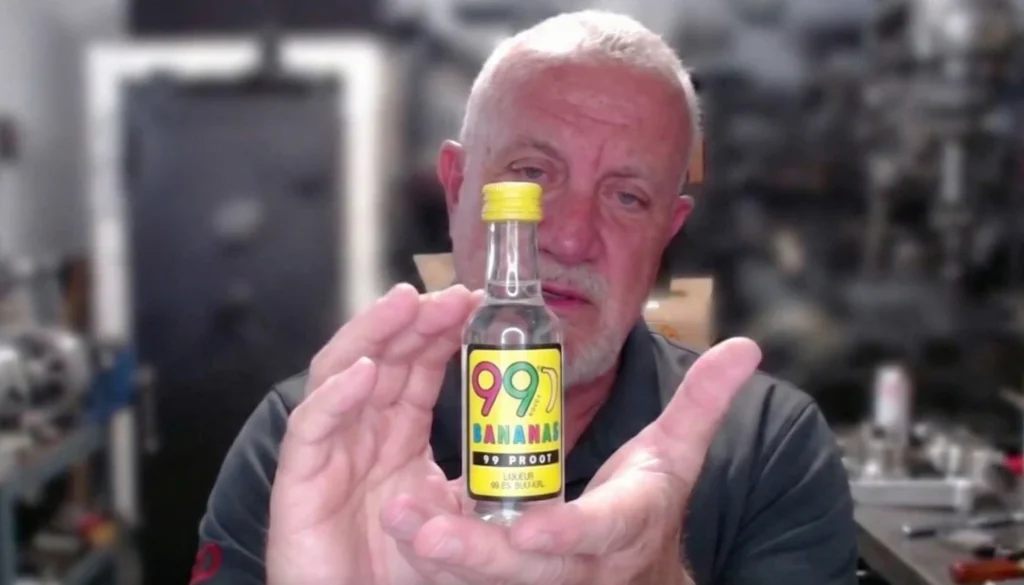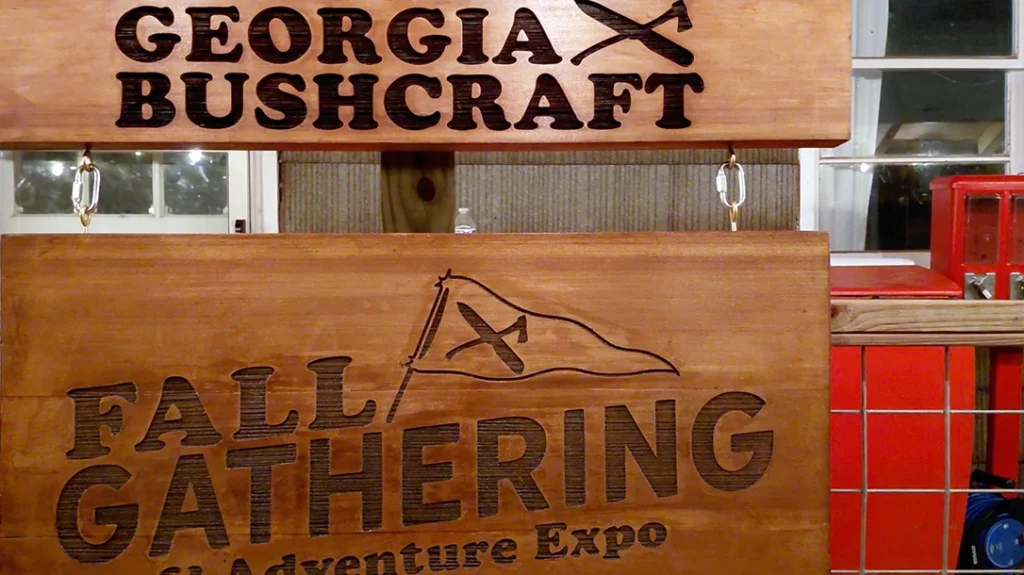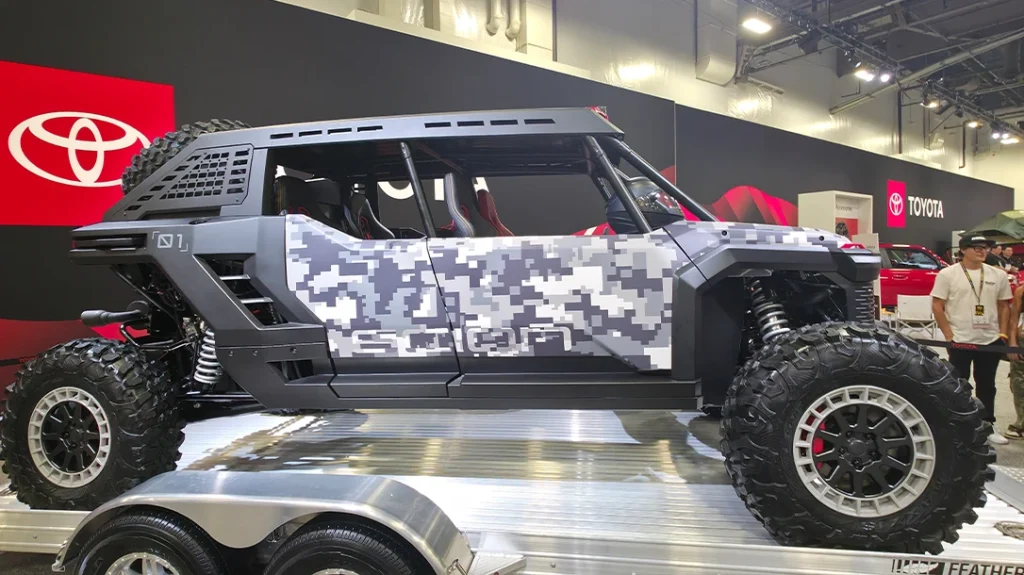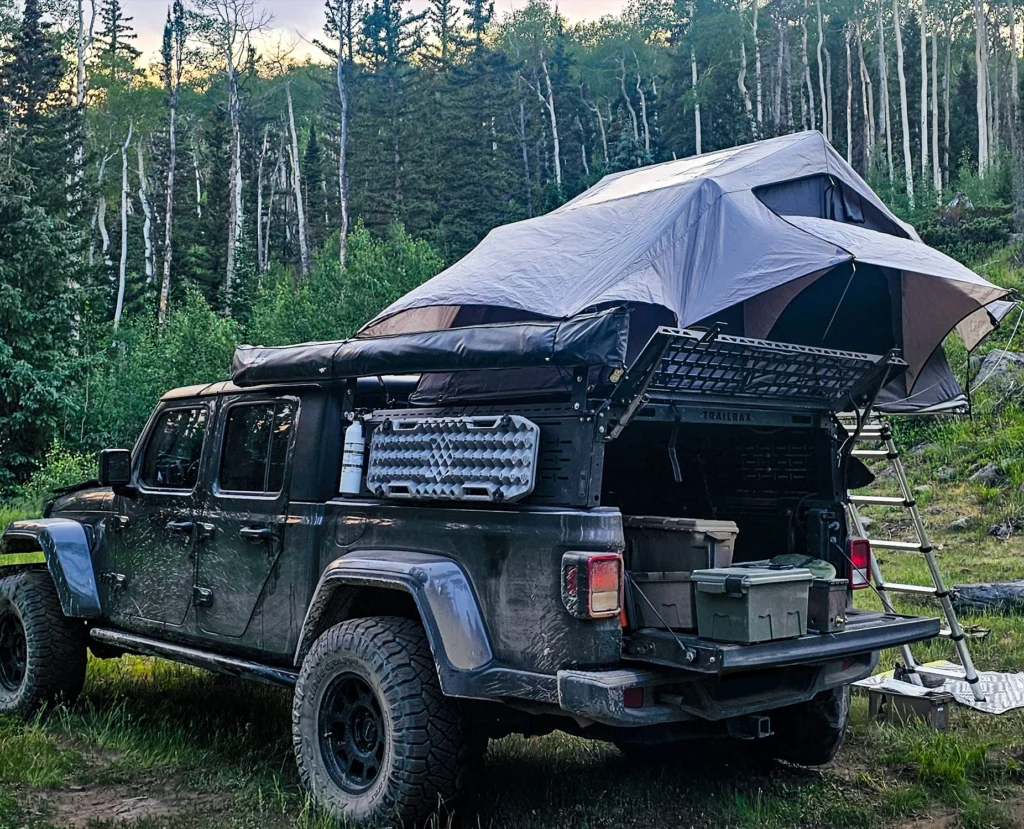Something I like to ponder is what it would be like to go back 50,000 or 100,000 years in time, or even a million years, and hand out a bevy of modern knives (or axes) to our ancestors. They worked with stone, flint, antler, and bone for the entirety of their lives. Could you imagine the change it would make to their lives to have tools made of modern knife steels?
Modern Knife Steels: How We Got Where We Are
The first prominent use of metal in tools and weapons happened during the Copper Age around 7500 years ago. To put that in context, before that period, homo sapiens used stone tools for around three million years. After the Copper Age, we had the Bronze Age and Iron Age. Now we are producing a multitude of alloy steels for common use in buildings, vehicles, and our weapons and tools.
Even the most basic forms of steel knife blades made in the last 150 years are exponentially better than what our ancestors had hundreds of thousands of years ago. Or even just a few thousand years ago.
Advertisement — Continue Reading Below
As a whole, we don’t really appreciate how good we have it now. In this article, we’re going to do a basic overview of knife blades from steel types/compositions to thicknesses. Likewise, we will discuss the applications for which these are best suited.
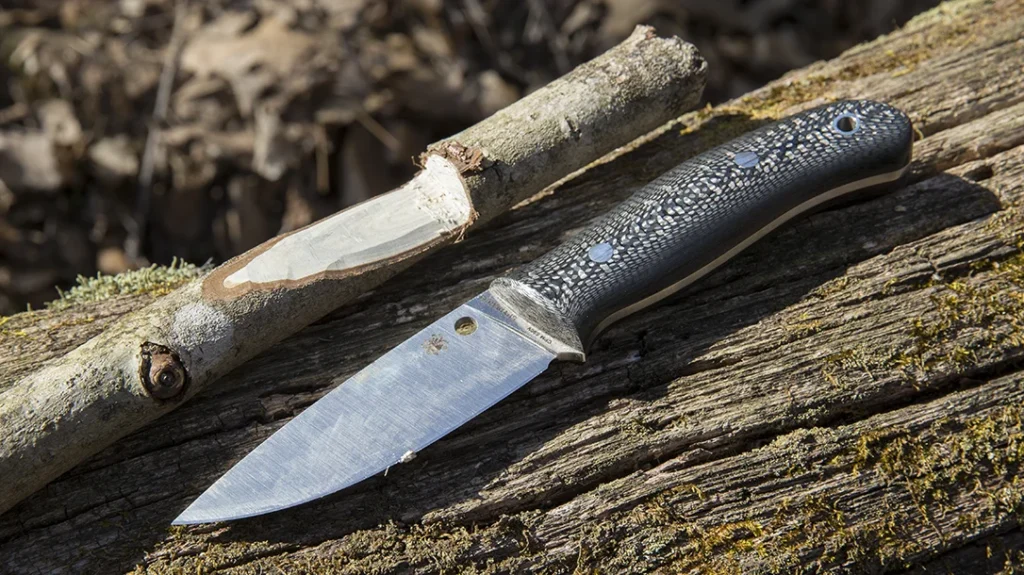
As you will see in the images throughout this article, there is a wide variety of knife types. Each is designed to be better at one task than another. This is particularly true about the blade designs. Different applications will require different blade lengths, blade thicknesses, shapes, and also different types of steel, which will be discussed later.
Advertisement — Continue Reading Below
This will be more of an introductory article for the newcomer to the knife scene. For the sake of time and article length, this will not be an exhaustive examination of every single aspect of a knife or every type of steel available. One could write a multi-page review of just one type of steel.
Instead, it will be more of a primer to provide some high-level concepts and get the hamster wheel turning. This will allow the uninitiated to make a better buying decision when they pick their next knife.
Basic Knife Steel Properties
From a bird’s-eye view, there are four basic qualities of knife steel to consider before making your purchase. Those qualities are ease of sharpening, edge retention, corrosion resistance, and toughness. Each particular steel has its own unique properties and ratings in these four categories.
Advertisement — Continue Reading Below
However, how the steel is heat-treated and the blade/edge profile will also play a significant part in how it measures up in those basic qualities. All of these properties will help determine which knife steel you might choose for various tasks such as camping, bushcrafting, cooking, diving, and fighting.
Ease of Sharpening
This is basically what you think it is. It’s a quality that’s measured by how easy it is to sharpen a particular type of knife steel. This can be especially important to those out in the field for long periods and may need to sharpen the blade manually with items like whetstones, ceramic rods, etc.
It’s also an important consideration when thinking about the wear it might cause to your equipment. For example, CPM S30V is a nice steel, but it’s not as easy to sharpen as other steels. So, if you’re sharpening with a belt grinder, you could go through belts and other materials more quickly.
Advertisement — Continue Reading Below
Edge Retention
This is another fairly obvious characteristic, and it’s not too difficult to figure out what it means for steel consideration. This is simply a measure of how long the blade’s steel will keep a sharp edge while doing various tasks.
Certainly, the edge profile and heat treatment matter since a 20-degree edge will have a different length of life from, say, a 25-degree edge. Likewise, hardness will play a role in edge retention. However, when comparing apples to apples, edge retention will, in large part, be determined by the characteristics of the steel.
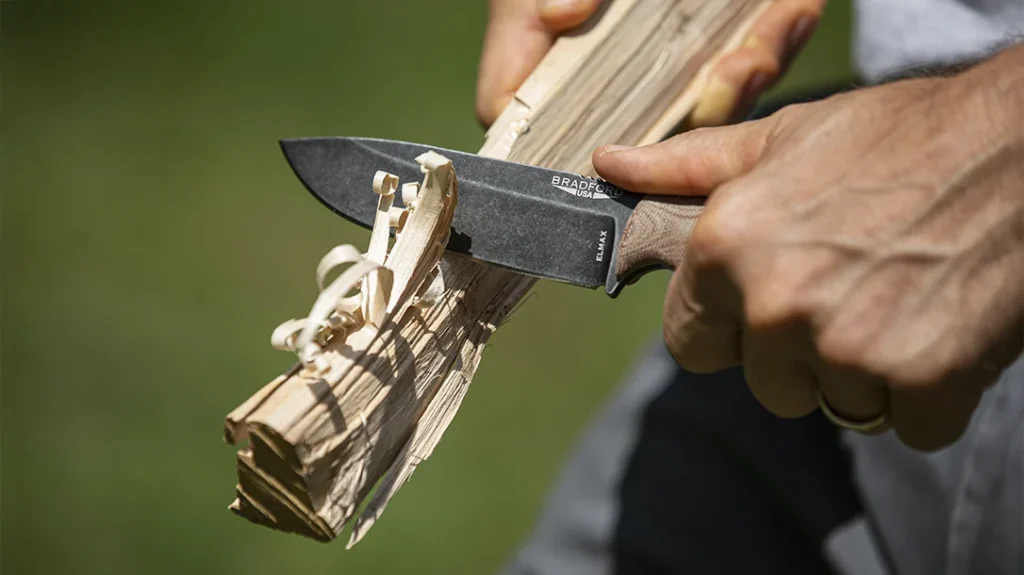
Advertisement — Continue Reading Below
Corrosion Resistance
This is simply a measure of how a particular steel holds up to perspiration, handling, and the elements before it starts to rust or corrode. A high-carbon steel, such as 1095, 1065, and 52100, is apt to corrode much more quickly than a stainless steel like CPM S35VN or Magnacut.
That’s why you will commonly find some kind of finish like powder-coat on high-carbon knives. The finish seals off the steel underneath to prevent corrosion from taking hold of the knife.
Toughness
This is simply a rating of how much force or energy can be absorbed by the steel before it fractures. This includes full breaks or chips on the edge. For knives that will be used for tasks such as chopping or prying, the user will want a blade with a high toughness rating.
Advertisement — Continue Reading Below
For industrial use, something like S7 tool steel offers extreme toughness and impact resistance. This makes it suitable for punching dies, being formed into chisels, and even being made into swords.
In the mainstream knife world, steels like 5160 or CPM 3V offer a high degree of toughness. So, these are especially good for large knives that are used for high-stress work like chopping and prying.
Size Matters
Naturally, the first thing one tends to think about regarding size is the blade length. Of course, this variable matters especially when considering a fixed-blade knife.
Advertisement — Continue Reading Below
Are you looking for a more balanced fighting knife, or do you want a backwoods chopper with a heavier weight bias up front for solid strikes? Perhaps you’re just wanting a small EDC slicer to help you around the house with boxes, packages, or other materials.
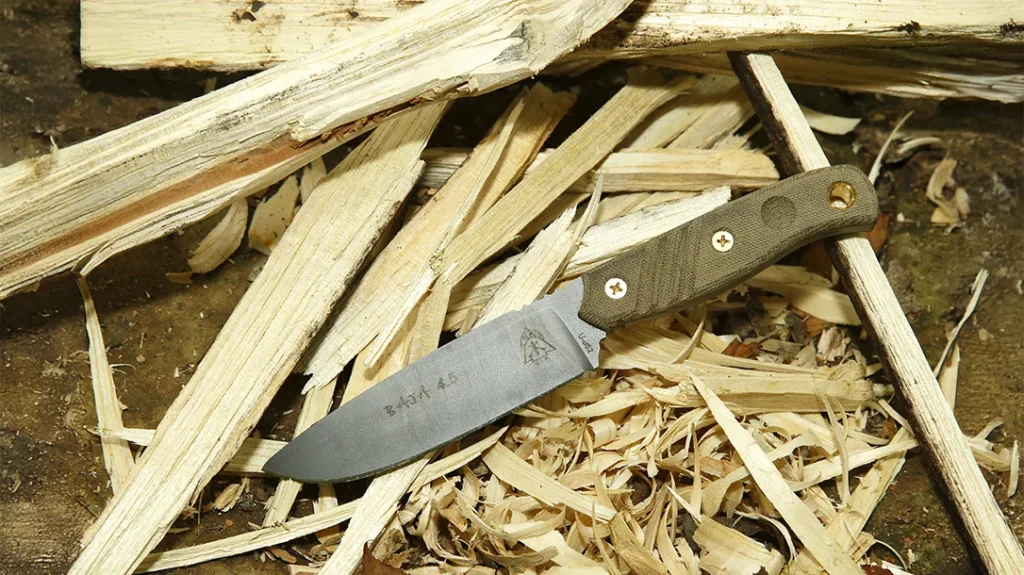
In the woods, a quality knife with a blade length of just 4-5 inches will do just about everything you need when paired with a tool like an axe or hatchet explicitly built for more robust jobs such as choppingor splitting wood.
Advertisement — Continue Reading Below
Blade Thickness
One factor that sometimes gets overlooked, especially with fixed blades, is blade thickness. There’s a large variety of blade thicknesses available. Common thicknesses include 1/8 inch, 3/16 inch, 1/4 inch, and beyond. Blade thickness contributes to how strong the blade will be and how it holds up to more work-heavy tasks.
If all you’re going to do is open dehydrated meal packs or slice up some food in the camp kitchen, then a thinner blade that is lighter and easier to carry will absolutely get the job done. With the right type of grind and edge profile, that thinner blade will be ideal for that kind of work. Heck, even a folding knife like a Swiss Army Knife will take care of most of those chores.
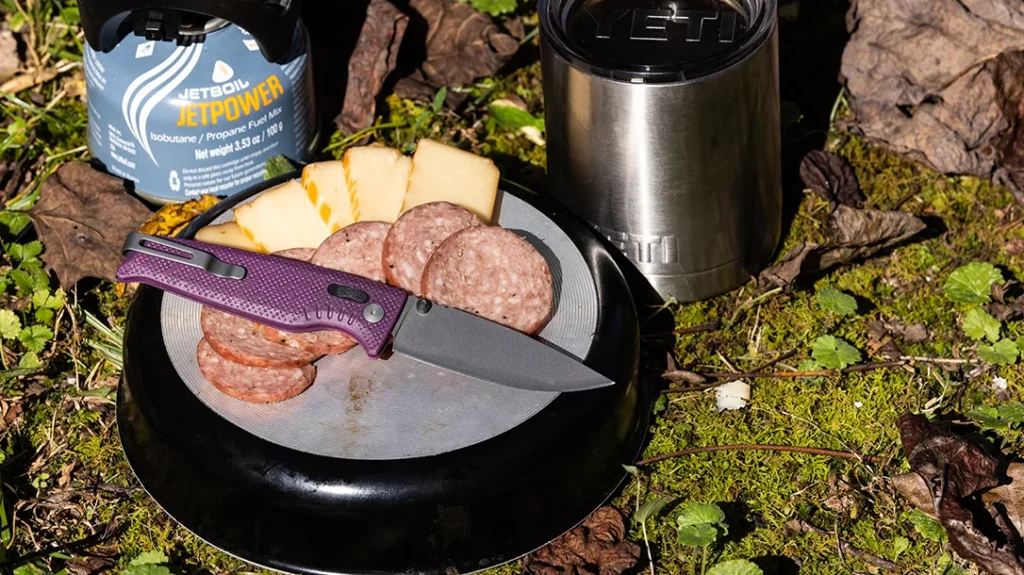
But suppose you’re a backwoods survival type or maybe even a military member, and your knife will be used in other tasks such as fighting, bushcrafting, a little prying, or even cutting through tough materials such as aluminum. In that case, you’ll probably want to move up the thickness ladder to something like 3/16th or more.
And if your knife is going to be just downright abused with things like chopping, breaching, and heavy-duty prying, then a more robust blade with a thickness of .25 or .35 inches will be in order.
Keep in mind, there are tools built specifically for those tasks. However, if you’re only going to have a knife with you, then something more robust will probably be the ticket. Also, keep in mind that blade thickness and grind type affect what type of edge profile can be achieved and the kind of task for which the blade is best suited.
Steel Types
When it comes to steel types for knives, there are an exhausting number of variables. They all come into play for how a knife is formed and how it measures in areas like corrosion-resistance, toughness, and edge retention.
Ingredients for various steels include carbon, chromium, vanadium, molybdenum, and several other elements. When creating steels, tweaking the content of just one ingredient can shift the properties of the knife blade overall.
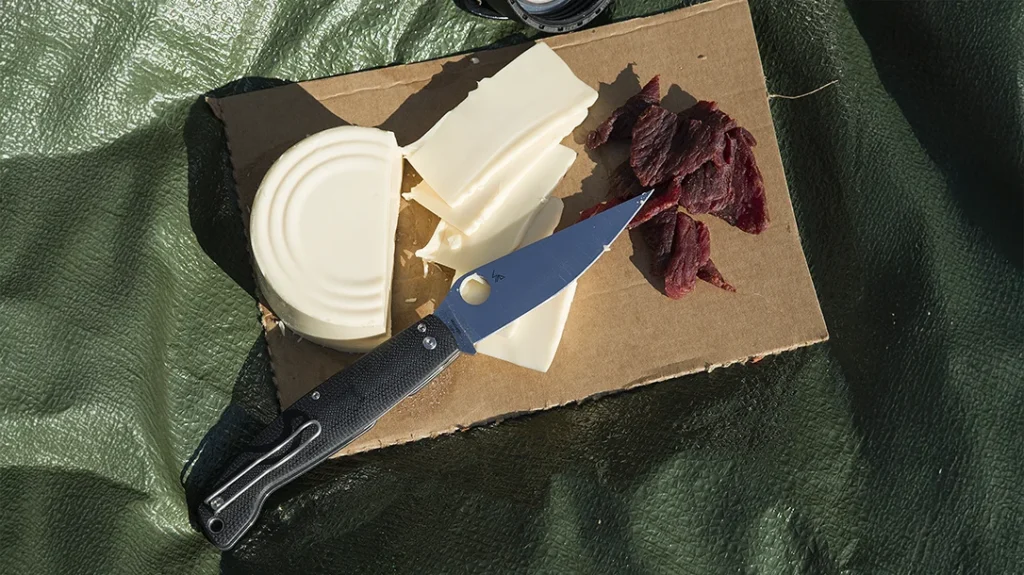
For example, adding Vanadium can improve the wear resistance and edge retention of a knife steel. Keep in mind, though, that increasing the amount of a mineral or element affects the overall percentages of everything else in that steel. So, making a knife more corrosion resistant can, at the same time, reduce its toughness or alter its edge retention.
A fantastic resource for the composition of knife steels or for a good understanding of how different steels measure up in toughness, edge retention, and corrosion resistance is KnifeSteelNerds.com.
Carbon Steels
There are three basic types of steel: carbon steels, high-alloy steels, and stainless steels. Carbon steels are generally less expensive and are fairly easy to forge and finish. They have been around for a long, long time and are proven in the field.
Carbon steels generally have a higher toughness with a carbon content of up to around 2.1 percent. However, carbon steels generally rank lower in edge retention and have basically zero corrosion resistance. That’s why you’ll see many high-carbon blades made of 1095 steel finished with a powder coating to help keep the elements from corroding the blade.
On the flip side, despite having low edge retention, high-carbon knives are usually easier to re-sharpen. Especially in the field when being done manually. Also, quite a few high-carbon knife steels, such as 52100 and 8670, exhibit a very high degree of toughness. This makes them very suitable for tasks like prying and chopping.
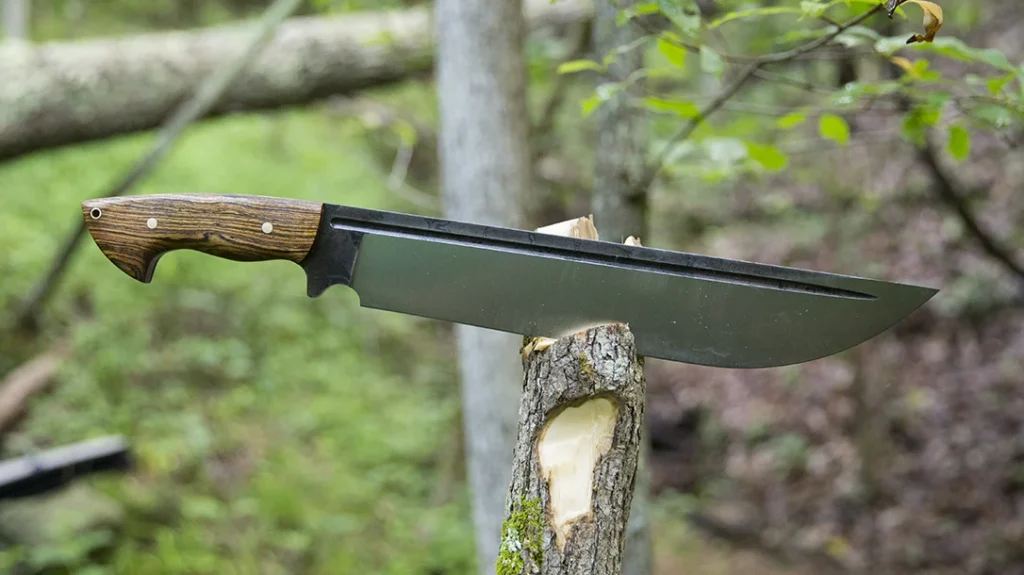
When looking at the charts, though, don’t be dissuaded by some of the lower numbers on edge retention and corrosion resistance of carbon steels, and feel like you have to pay an obscene amount of money for a better blade steel. As I said earlier, our most basic knife steels are exponentially better than the materials used by our ancestors tens of thousands of years ago.
I still own and use carbon-steel knives that I’ve had for over thirty years, to good effect. I have quite a few blade types from 1095, O1, 52100, and 5160 that have been extremely reliable. They have always gotten the job done.
High-Alloy Steels
Then we come to the high-alloy steels. They integrate more (and different) component materials for a better balance of performance scores in all metrics than carbon steel.
These are not considered to be stainless steels. However, their composition results in pretty decent levels of corrosion resistance across the board. Likewise, several offer a good amount of toughness as well as solid edge retention. These steels might cost a bit more than carbon steels, but you get a great return on the extra investment.
For example, CPM-3V offers one of the best balances of toughness, edge retention, and corrosion resistance in this steel category.
I just recently picked up a Cold Steel SRK (Survival Rescue Knife) in CPM-3V. It has one of the sharpest edges I’ve felt on a mass-production knife. Likewise, it is incredibly tough and will hold up to the most rigorous tasks that a Survival Rescue Knife might have to do. And I got it for under $100. That’s a pretty fantastic value for blade steel of this type.
Stainless Steels
Finally, we round out the conversation with stainless steels. As mentioned, stainless steels contain 10.5 to 12 percent chromium. This results in a higher degree of corrosion resistance than the previous two types of steel. Many of the popular steels we see today in more premium knives, including pocket knives, come from this category.
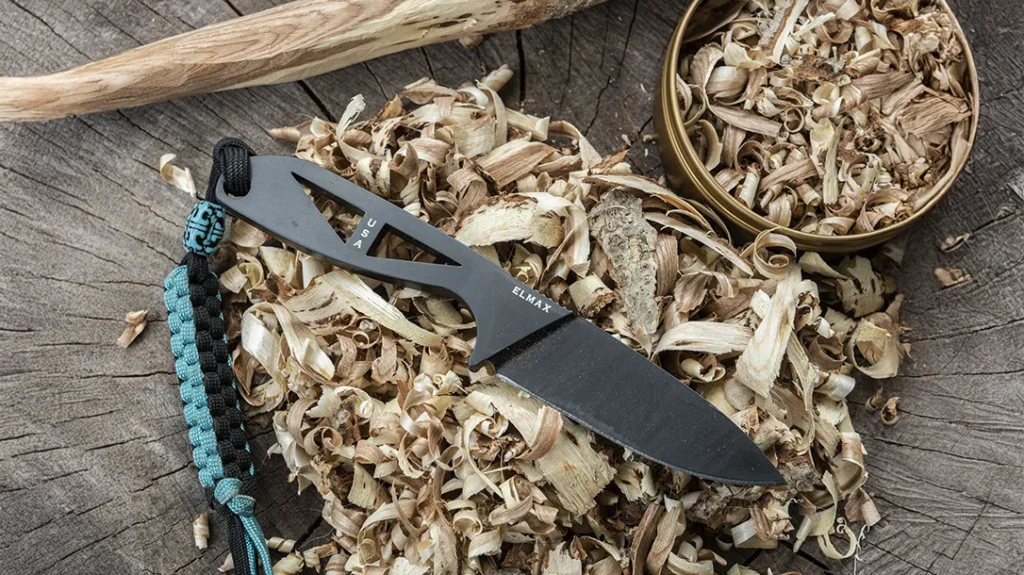
For example, they include CPM-S35VN, CPM-S45VN, CPM-S90V, AEB-L, Elmax, and the recently popular Magnacut. Magnacut has become very popular because, although it does not have the highest score in any category, it has the most balanced scores of any steel in the areas of toughness, edge retention, and corrosion-resistance.
Putting it All Together
So, when it’s time to buy your first quality knife or take a step up to a more premium option, steel properties and types are variables that you definitely want to consider. That’s not to diminish other variables like heat treatment, skill of the maker, and quality of the grips.
In the case of pocket knives, you’ll want to consider other factors like the walk and talk of the blade, ease of deployment, the action of the opening mechanism, blade centering, and so forth.
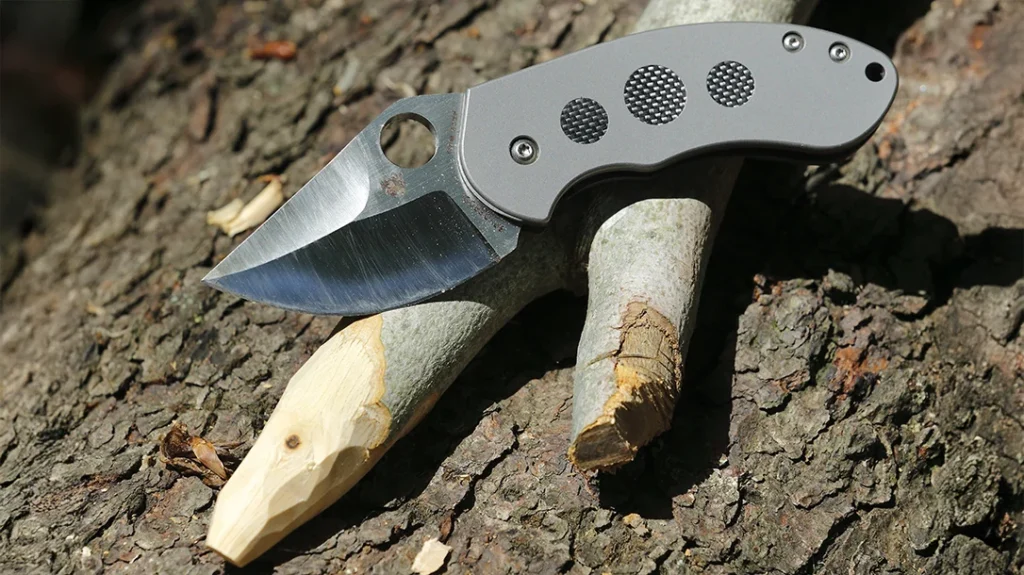
But when focusing on the blade itself, you’ll want to consider the performance of certain steel types for specific applications. For example, you’re not going to be doing any chopping or heavy work with a CPM-S90V folder. So, who cares if S90V’s toughness rating is on the lower end?
However, it does have extremely high edge-retention performance, and it’s in the upper tier of corrosion resistance. Those two factors make it ideal for a pocketknife or fixed blade that’s just going to be used for cutting and not be involved in any impact- or torque-based work.
On the flip side, if you are looking for a blade steel that’s extremely tough and will hold up to harsh conditions and a bit of abuse, you could choose CPM-3V or AEB-L. But if you take care of your tools and are looking for something that doesn’t cost quite as much, you could pick up a knife with a high-carbon blade in something like 52100 or 8670.
However, that means you’ll probably have to resharpen it more often because of lower edge retention. Likewise, you’ll need to keep it lightly oiled to prevent corrosion. There are always trade-offs.
Modern Steels Open the Possibilities
Now, you can get any knife with any steel that you want…just because. That’s the beauty of collecting and just loving knives in general.
But suppose you’re picking a knife intentionally for a specific use case. In that case, you should always do your research and consider what properties are most important for the application for which the knife is intended.
There are no blade steels right now that have top marks in all three categories. Each steel design is a matter of compromise to gain more of one steel property and lose some of another property, or both other properties.
To help get you started, I’m including some information below that came from a couple of charts over at KnifeSteelNerds.com. They give the ratings on the properties of various steels.
I won’t plagiarize their content. However, the information and analysis are so good, I can’t pass up pointing out some things to maybe help someone with a good starting point for the next knife they might want to buy.
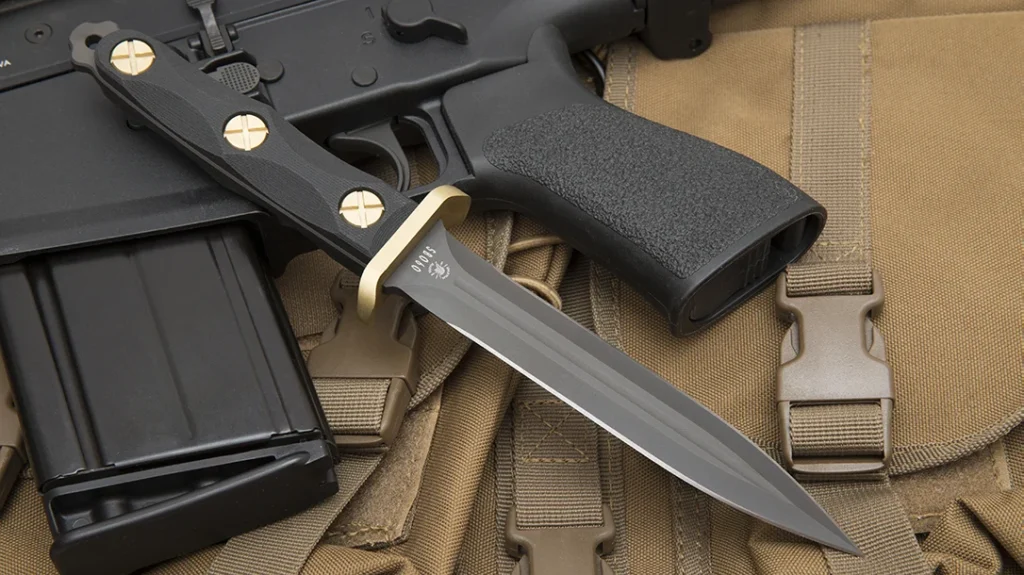
These are the top two to three specific steels in each performance category within the three general steel types.
Best Score for:
| Carbon Steels | |
| Toughness | 8670, 5160 |
| Edge Retention | Apex Ultra, Blue Super |
| Corrosion Resistance | Tie between 5 steels, very low |
| High-Alloy Steels | |
| Toughness | Z-Tuff, 3V |
| Edge Retention | Rex 121, 15V, Maxamet |
| Corrosion Resistance | CPM-3V, CPM-CruWear |
| Stainless steels | |
| Toughness | 420HC, AEB-L |
| Edge Retention | S125V, S90V |
| Corrosion Resistance | Vanax, Magnacut, LC200N |
Now, just because you want to have a knife for chopping and heavy-duty work doesn’t mean you automatically pick a blade steel with the highest toughness score. That particular blade steel might also have the lowest scores for edge retention and corrosion resistance.
Remember that there’s a balance that needs to be kept in mind. Maybe you can compromise on the toughness rating a couple of points if that means you can get a blade with a little better edge retention or more corrosion resistance—or both.
Cutting to the Point
As I mentioned earlier, there are too many factors with knives to write about each and every one in detail. It just can’t be done in an article of this size. This article was merely an introduction to a few aspects to consider when attempting to choose the correct blade steel. It was simply meant for priming the pump to get the thought process started.
However, I would also suggest that you pay attention to who’s doing the heat treatment and how it’s being done. Some companies are known for their heat treatment process or the knowledge of the person doing it.
An excellent heat treat can improve the toughness of a knife and improve its edge-holding capabilities by setting the correct hardness for that steel. You can buy the best steel in the world, but if someone does a sloppy or incorrect heat-treat process on it, the steel won’t be augmented to its fullest potential.
We often have a personal connection to our tools. Picking a new knife can be a very subjective choice based on the look, feel, shape, and size. However, picking a new knife should not be done on the basis of aesthetics alone.
More pragmatic concerns, such as steel type and composition, should always be a factor in the decision-making process. Doing the research and digging into the knife steel’s composition and heat treatment will ensure that the knife will not only look great and feel at home in the hand, but will ultimately be the right choice for the job for which it is intended.
